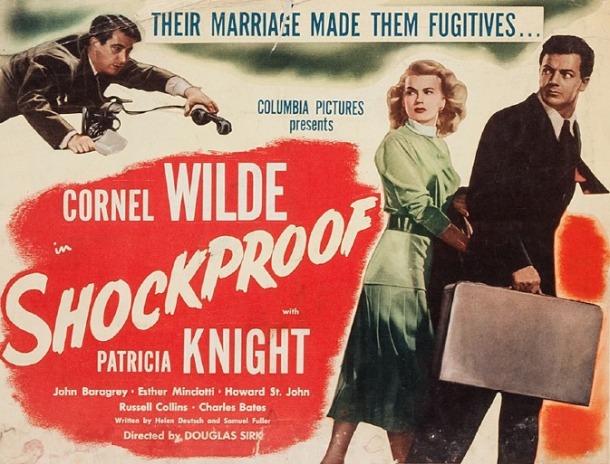
Tarzan’s Magic Fountain (1949)
Directed by Lee Sholem
Sol Lesser Productions / RKO Radio Pictures
Tarzan’s Magic Fountain marked the beginning of a new era for Tarzan movies.
Johnny Weissmuller, the Olympic swimmer turned actor who first played Edgar Rice Burroughs’s lord of the jungle in Tarzan the Ape Man (1932), left the series after appearing in Tarzan and the Mermaids (1948).
The hunt was on for a hot young male actor to take his place, and producer Sol Lesser reportedly interviewed more than a thousand of them. He and RKO Radio Pictures eventually settled on 29-year-old hunk Lex Barker.
Barker was a native of Rye, New York, a member of a prominent family who disowned him when he went into acting, and a veteran of World War II. He had chiseled features and an even more chiseled physique. The only thing he needed to do to play Tarzan was shave his chest and learn to speak in the clipped, pidgin English that Weissmuller had made famous.
The script for Tarzan’s Magic Fountain, by Curt Siodmak and Harry Chandlee, tells a story that will be familiar to fans of the film series. Greedy outsiders become aware of something very valuable hidden deep within the jungle, and Tarzan must act as a buffer between the tribe who guard it and the outside world.
An aviatrix named Gloria James Jessup (Evelyn Ankers), who was lost and presumed dead (à la Amelia Earhart), walks out of the jungle one day. She doesn’t appear to have aged a day since she disappeared. Her reasons for resurfacing are purely altruistic, but the evil Mr. Trask (Albert Dekker) realizes that if she’s telling the truth — and there really is a fountain of youth — that he could stand to make millions selling the water.
The beautiful and shapely Brenda Joyce returns in the role of Jane. She appeared in four Tarzan films opposite Weissmuller, and her presence in Tarzan’s Magic Fountain helps to make the transition from Weissmuller to Barker a smooth one.
She also plays a pivotal role in the film’s story, as she becomes close friends with Gloria and decides she will do anything to help Gloria be happy — even if it means doing exactly what Tarzan warns her not to do.
Tarzan’s Magic Fountain is a fun entry in the series. It’s full of excitement, fantasy, and amusing animal action. Elmo Lincoln, who played Tarzan in the first film adaptation of Burroughs’s novel, Tarzan of the Apes (1918), has an uncredited cameo as a fisherman repairing his net.
Barker makes for a fine Tarzan, but he’s lacking that special something that Weissmuller had. Even in his later years, Weissmuller moved like a panther and cut through the water like a fish. Barker is a beautiful physical specimen, and he moves well, but he lacks Weissmuller’s unique, leonine grace.



















